Apple variety Cinnamon striped
Apple-tree Cinnamon striped - an old variety of folk selection. Other names for this variety are Brown, Cinnamon. The first mention in the literature of the variety Cinnamon striped is dated 1810 (V. A. Levshin "Governor or practical instruction in all parts of agriculture"). A more detailed description was published in 1848 by the Moscow fruit grower N.A. Red-eyed. Also, this variety is mentioned in the famous story of A.P. Chekhov's "Black Monk". It is known that apple trees of this variety decorated the garden of the famous estate of L.N. Tolstoy Yasnaya Polyana. And for more than a century the trees of this apple tree have been growing in the gardens of the Valaam Monastery, located in Karelia. There is an assumption that the Cinnamon striped variety appeared long before the beginning of the 19th century. Nobody bred it specially, it was obtained in an absolutely natural way - as a result of natural pollination.
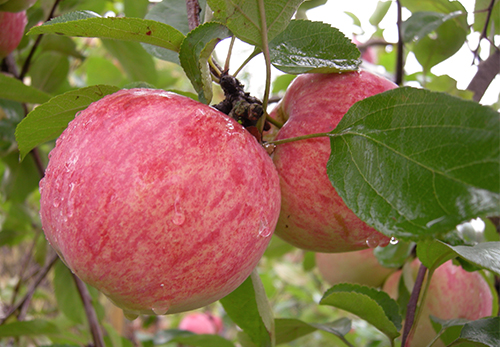
Cinnamon striped refers to the early autumn varieties of apple trees. The variety is included in the State Register for the Central Black Earth, Middle Volga, Volgo-Vyatka, Northern and North-Western Regions. Such a wide distribution of this apple tree in the Central and Northern regions of the country is due, first of all, to its highest winter hardiness in comparison with other popular varieties of central Russia. Even during very harsh winters in 1955 - 1956 and 1978 - 1979, when the air temperature dropped to minus 38 - 40 ° C, and on the snow surface even lower (up to minus 42 ° C) in the Oryol region, damage to apple trees of the variety Cinnamon striped scored only 0.4 points on a 5-point scale. At the same time, trees of such winter-hardy varieties as Grushovka Moskovskaya, Anis alyi and Antonovka Obytochnaya received more serious damage, and the average freezing point was 1.0; 1.4; 1.6 respectively.
The trees of this apple tree grow quite large, with a powerful branched crown. Therefore, it is ideal for planting in spacious garden areas and not at all suitable for small areas. Young trees have a wide-pyramidal or broom-shaped crown; mature trees are characterized by a wide-round crown with hanging branches. The branches on the apple tree themselves are very long and rather thin, there are few leaves on them, the denudation in the lower part is especially pronounced. This contributes to good ventilation and illumination of the crown, which also provides trees with additional protection from scab. In general, the resistance of the Cinnamon striped variety to fungal diseases is assessed as medium. The main branches extend from the trunk at an acute angle. The number of overgrowing branches is small. Fruits in young apple trees are formed mainly at the ends of the shoots of the last year, as well as on twigs. In mature trees, the bulk of apples can also be located on ringlets.
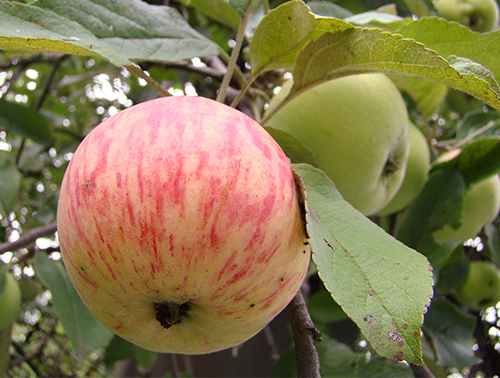
Shoots are dark brown, medium thickness, slightly pubescent. The bark of the shoots is dark red, smooth to the touch, slightly shiny. Under the conditions of the nursery, this apple tree forms medium-sized straight annuals with a well-pubescent upper part. Vegetative buds are weakly convex, small in size, with a rounded apex and weak hairiness. The leaves are elongated at the base, tapering, the tips are strongly elongated, the color is dull, grayish or light green, the pubescence is weak, the surface is embossed ("shagreen"), rough to the touch. The serration along the edge of the leaf is pronounced, protruding, serrated, uneven. On young apple trees and trees grown in the nursery, the leaf blades are often reverse folded, "keeled". The leaf petioles can be short or medium and have small styloid or lanceolate stipules.
The flowers are medium in size, the buds are delicate, light pink, the closeness of the petals is medium.
Fruits grow small - medium and smaller than medium in size. The average weight of an apple is 70 - 90 g, but it can reach up to 140 g. The shape is turnip, strongly flattened.Fruits are not ribbed or with poorly expressed, small lobes. When removed, the main color of the fruit is greenish, at the time of consumer maturity it is yellow. The integumentary color is expressed by sharply outlined stripes of dark red color; from the sunny side there are specks on a weakly pronounced reddish background. In general, apples look attractive. Also, two clones of this variety are distinguished with a more intense and rich color of the fruits:
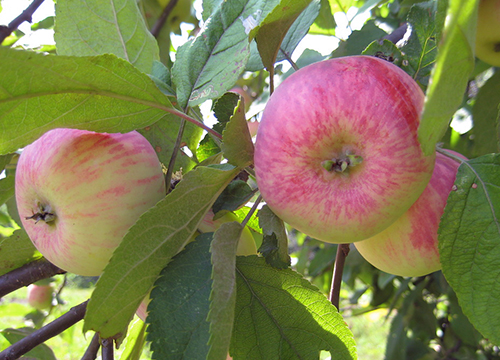
- Cinnamon smoky - the blush is expressed by merging stripes, a bluish bloom is noticeable on the surface of the fruit.
- Cinnamon pineapple - the fruits are covered with a solid thick blush.
The skin of the fruit is smooth, dry, with a glossy sheen. Subcutaneous dots are white, present in small numbers and practically invisible. The funnel is characterized by an average width and depth, a slight rustiness of an olive shade is permissible. The stalks are rather long. The saucer is wide, shallow, with pronounced five swollen tubercles at the base of the sepals. The cup can be closed or half open. The sub-cup tube is rather deep, wide, and tapered. The heart is onion or bulbous. Seed chambers are large, closed. The seeds are dark brown, wide, of medium size.
The apples taste incredibly juicy, sweet, with a pleasant sourness, light aroma and spice of cinnamon (which explains the name of this variety). The pulp is dense, yellowish, often pinkish under the skin. The excellent dessert properties of the Cinnamon striped variety make it possible to use apples not only fresh, but also to use them for making preserves, making jams and marmalades. By chemical composition, the fruits contain: sugars (10%), titratable acid (0.54%), pectin substances (9.5%), ascorbic acid (4.9 mg / 100 g), P-active substances (131 mg / 100 g).
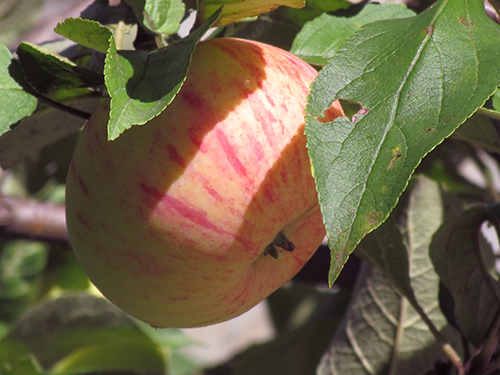
The fruits ripen by the end of August - beginning of September. With proper storage, the consumption period can be extended until the end of December - beginning of January.
The indisputable advantages of this apple tree are its excellent winter hardiness and a high appreciation of the palatability of the fruit.
Among the main disadvantages of the Cinnamon striped variety, a late entry into the fruiting period is distinguished: under favorable conditions for 7 years, and with insufficient care only on the 10th. In addition, the yield indicators for apple trees are not high enough. It is for these reasons that this variety is extremely rare in nurseries for free sale. It is also rarely used for commercial cultivation. Another disadvantage is the frequent rupture of the trunk due to easily splitting wood.
In order to accelerate the onset of fruiting, it is recommended to plant seedlings in moist, fertile soils with good drainage. Close occurrence of groundwater is not allowed at the landing site. Fertilizers and shaping pruning need to be applied periodically.
On the basis of the Cinnamon striped variety, about 20 winter-hardy apple varieties have been bred. Among them are Autumn Joy, Cinnamon New, Young Naturalist, obtained by crossing Cinnamon striped with a variety Welsey at the All-Russian Research Institute of Horticulture. I. V. Michurin.
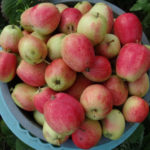


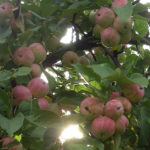
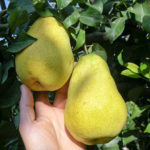
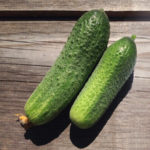



Super grade!
The variety is good. It is a pity that it begins to bear fruit only after 7 years, or even 10.
The apples are really sweet and delicious.
In fact, I find these apples to be the most desirable apples in the orchard.As stated in the article, this is a very old and time-tested variety. Fruits with a unique taste and smell. Suitable for drying, and for jam, and for freezing, and for fresh consumption until winter (if properly collected and stored). Maybe Brown striped and begins to bear fruit late, but my apple trees are already 45 - 50 years old. And they still bear fruit excellently. The main feature of the variety is to plant in well-lit areas. Apples that grow on branches in the shade do not have an intense color and a pronounced smell. Knowing that it is time to update the apple trees, I am afraid to acquire young seedlings (I may not like the result of the new selection).